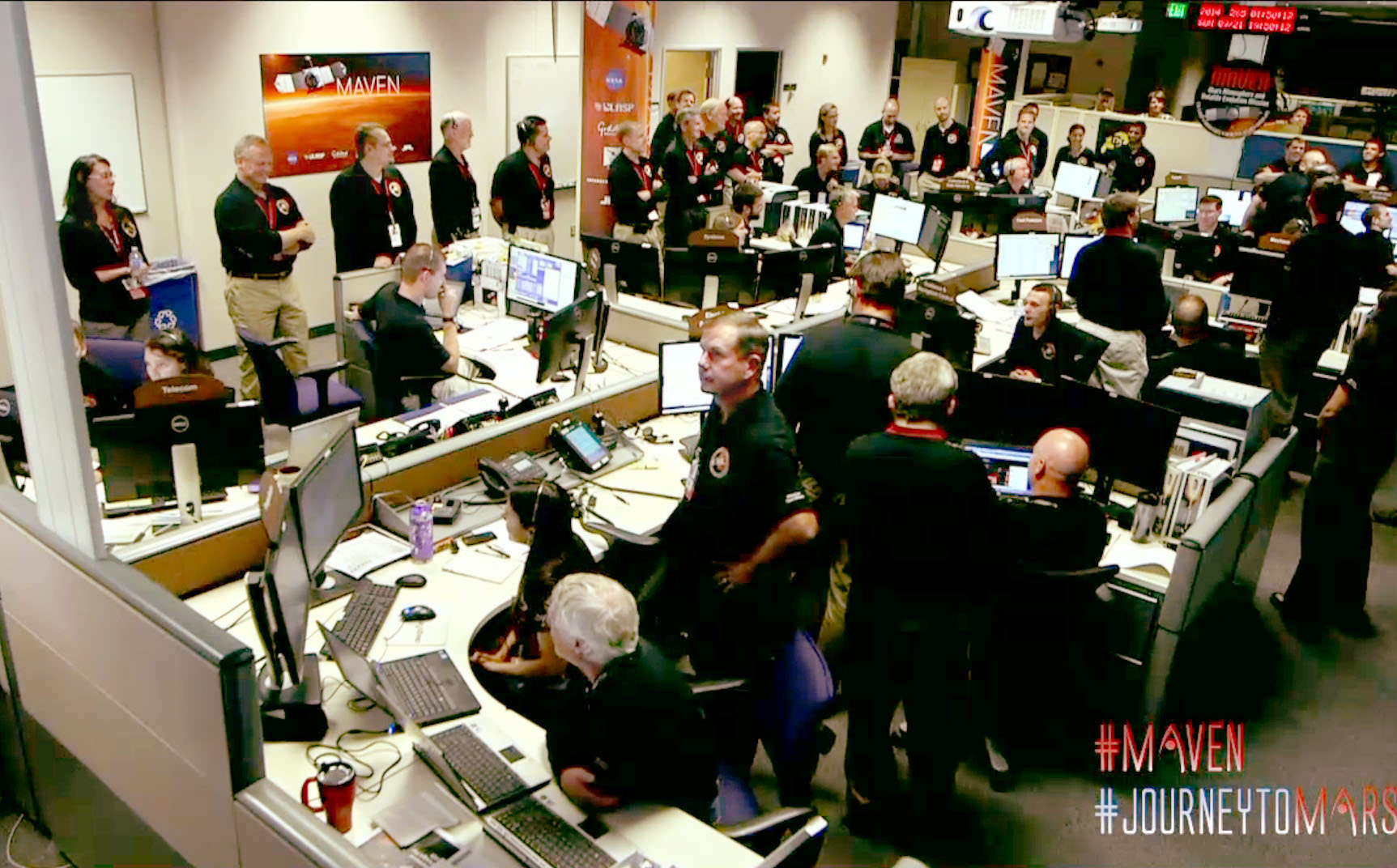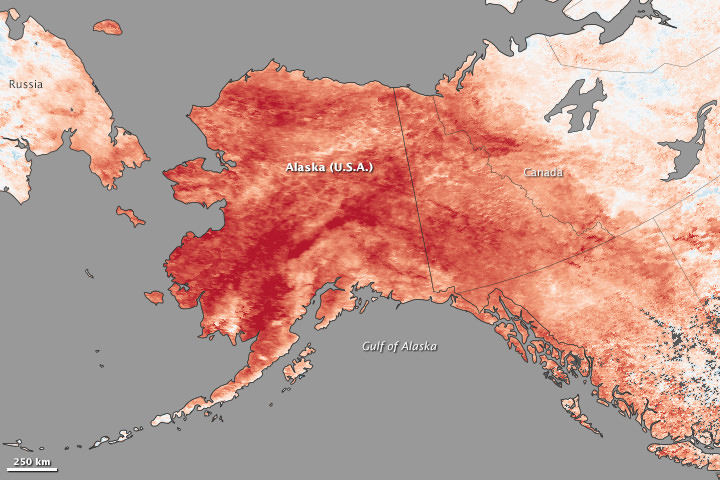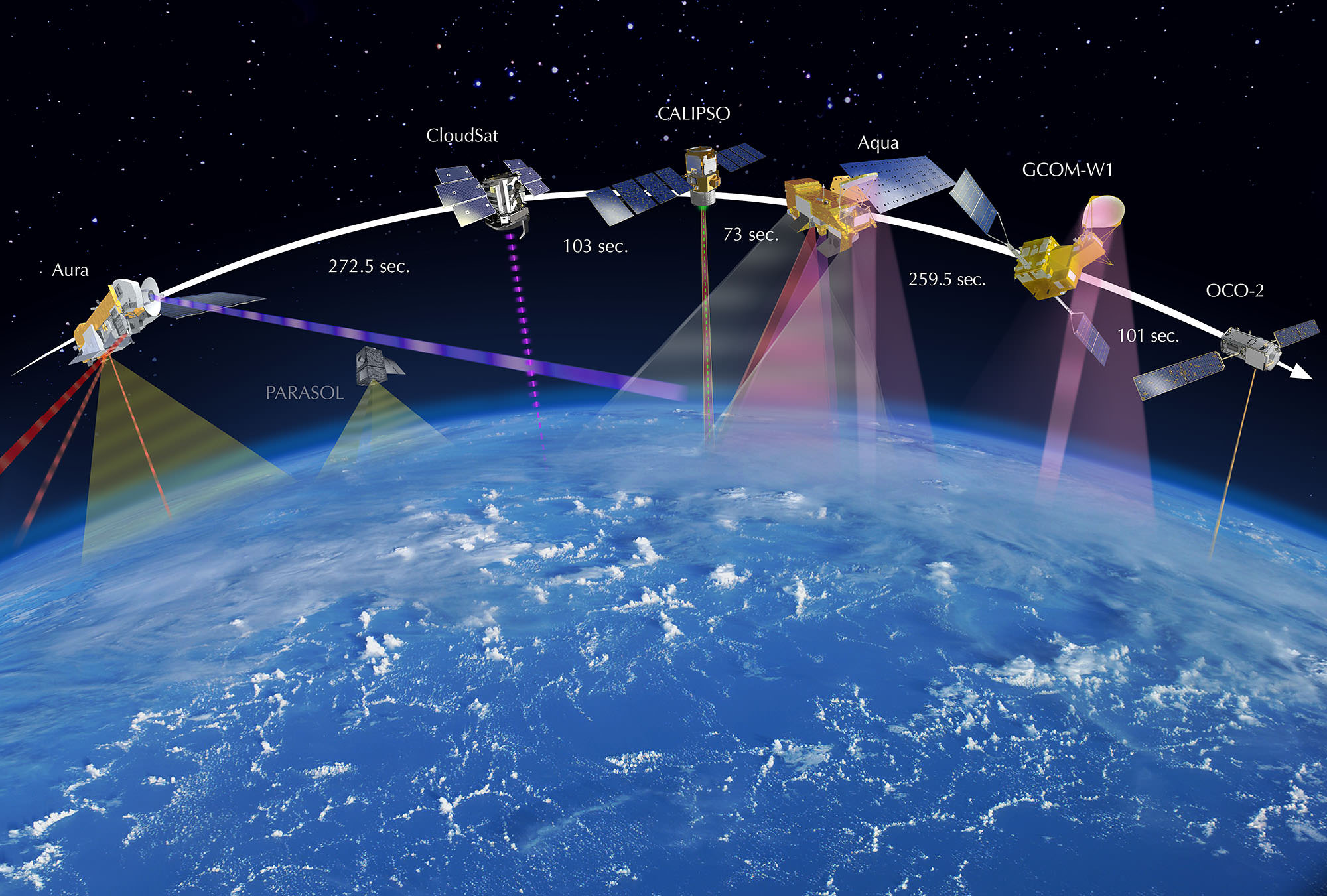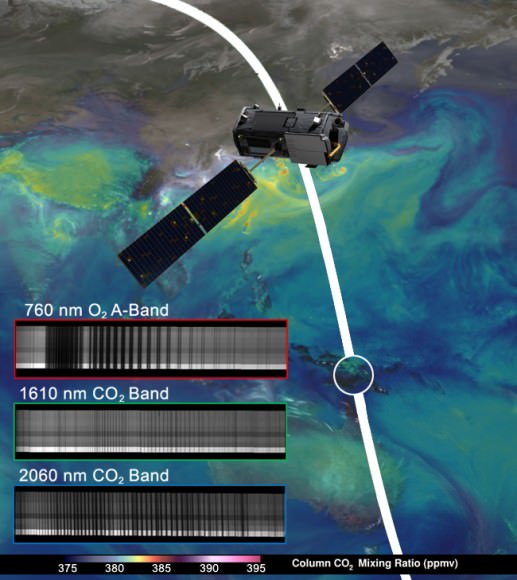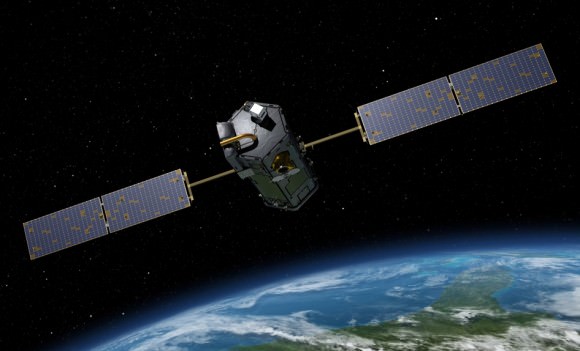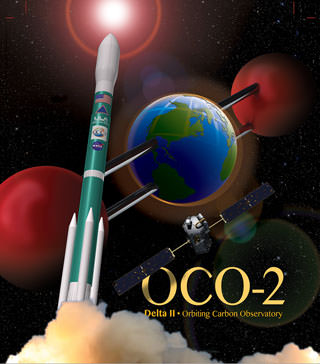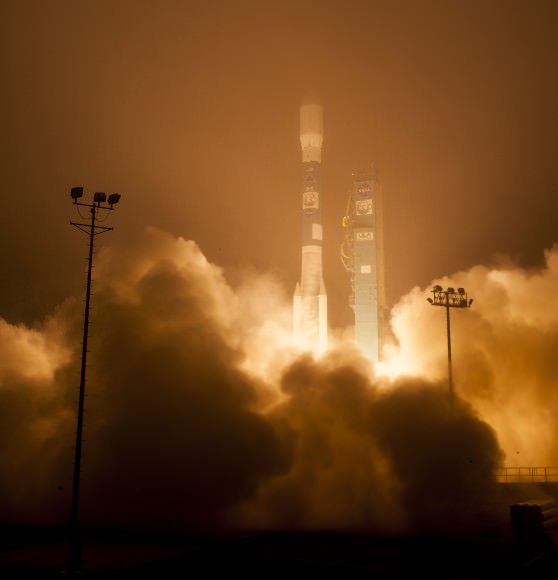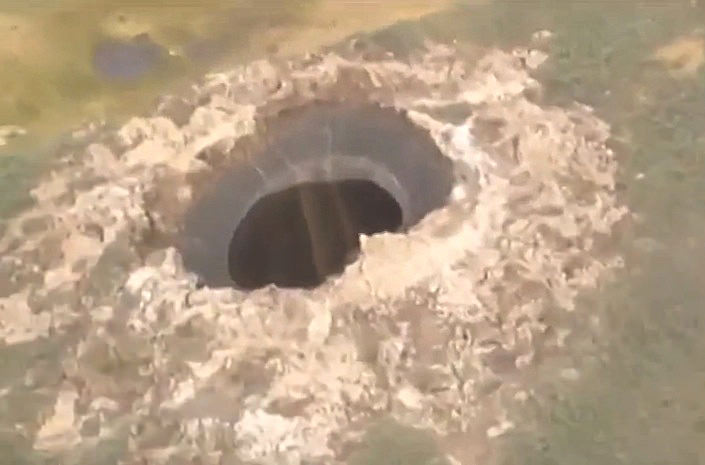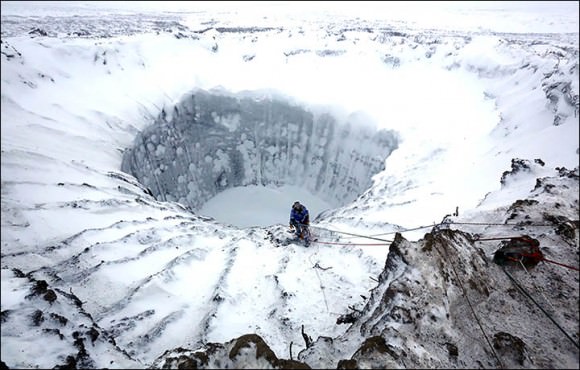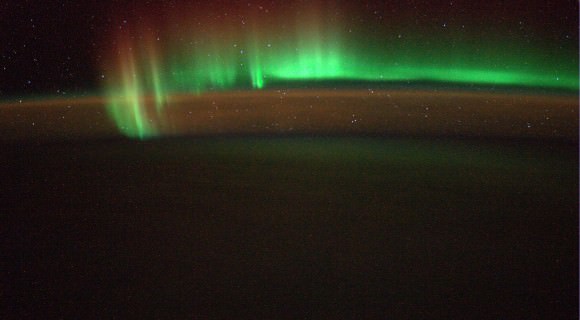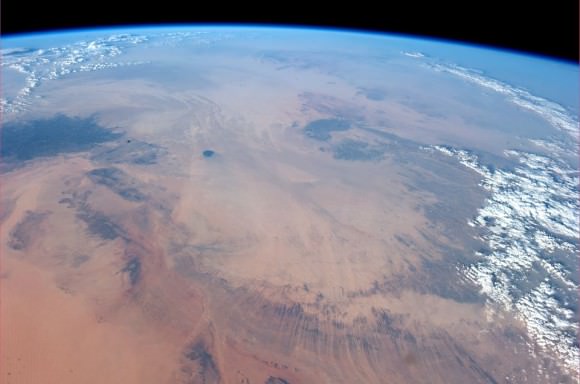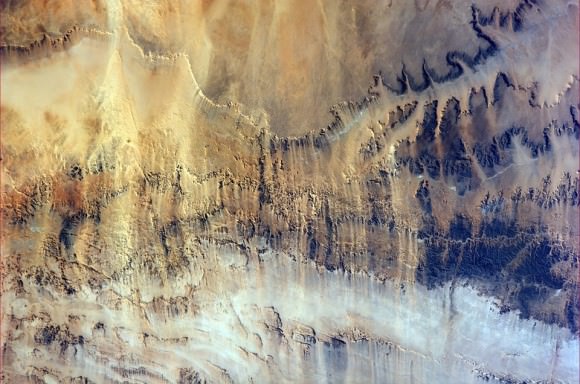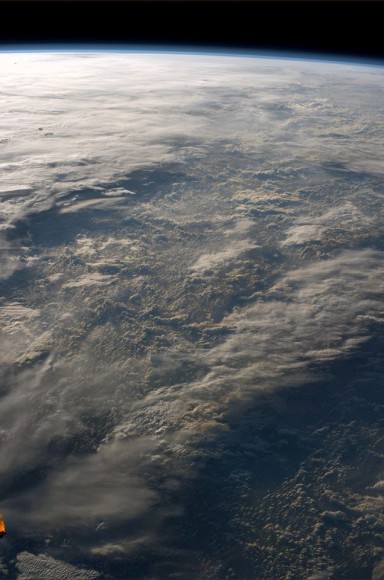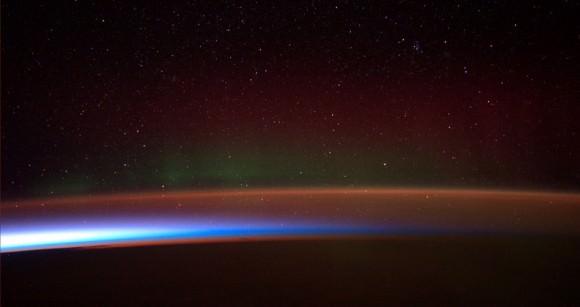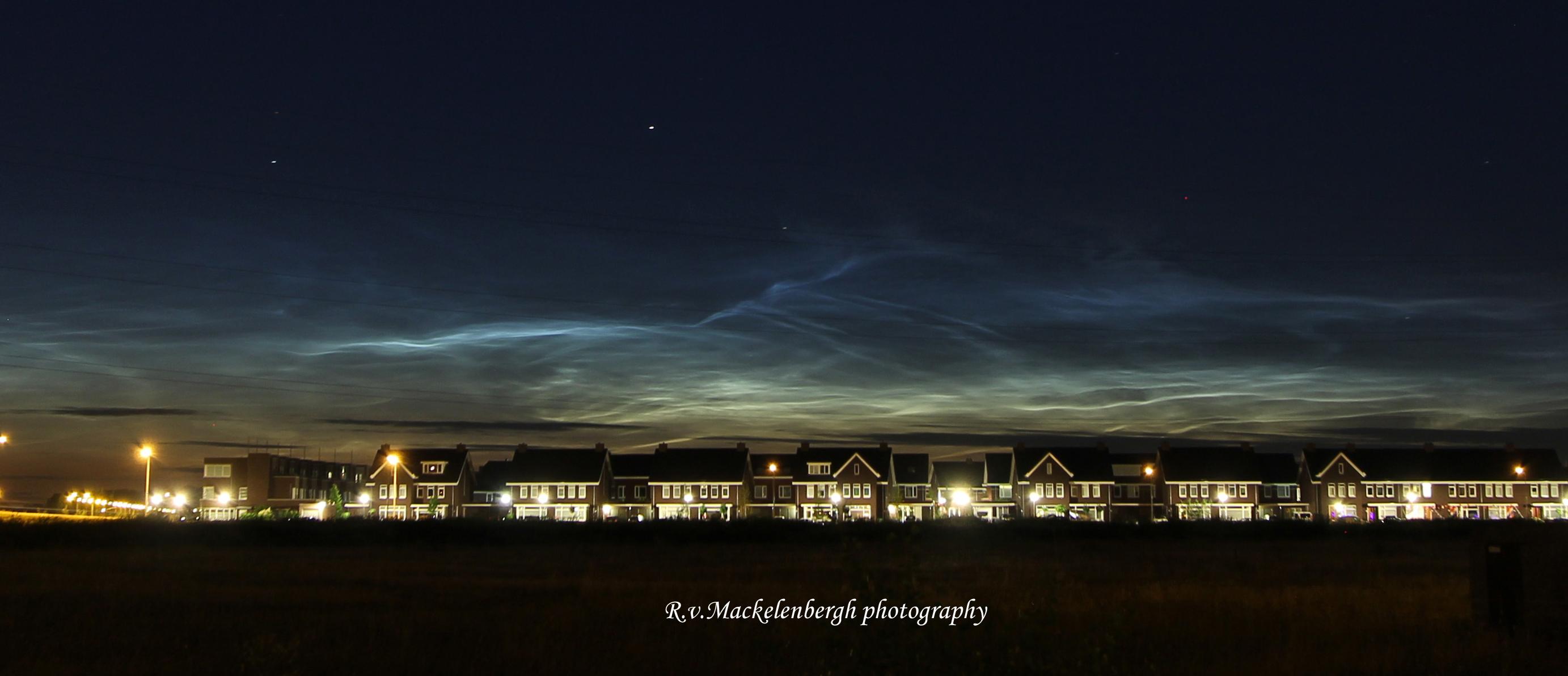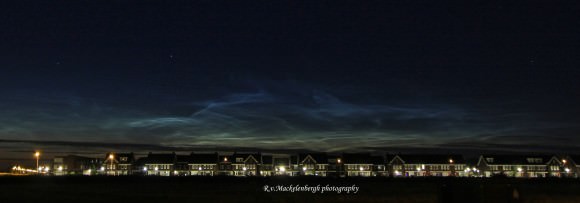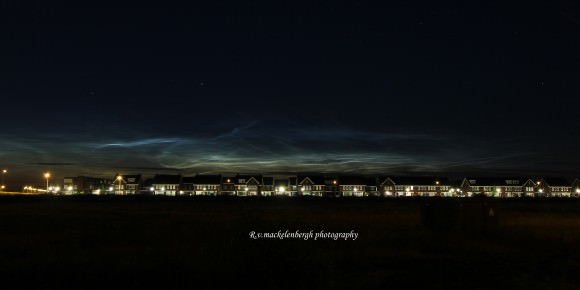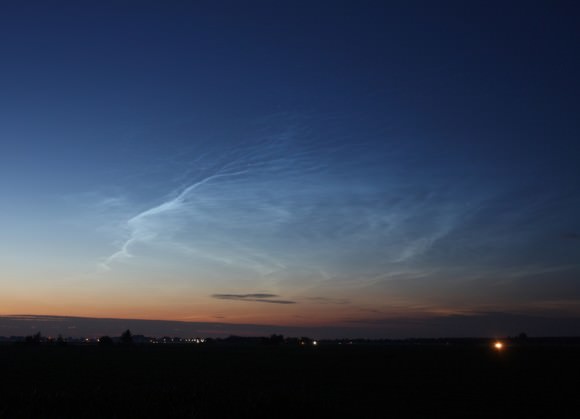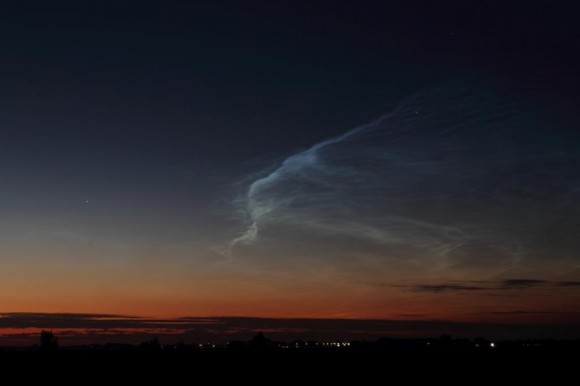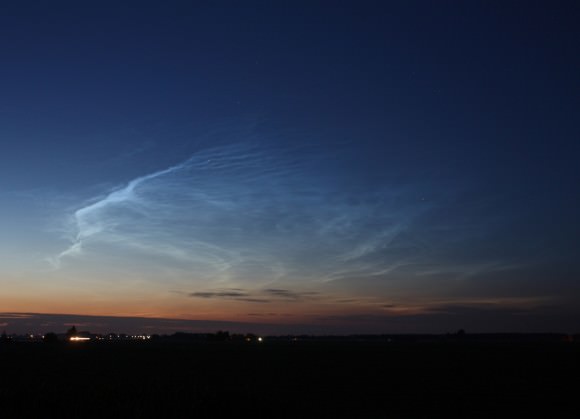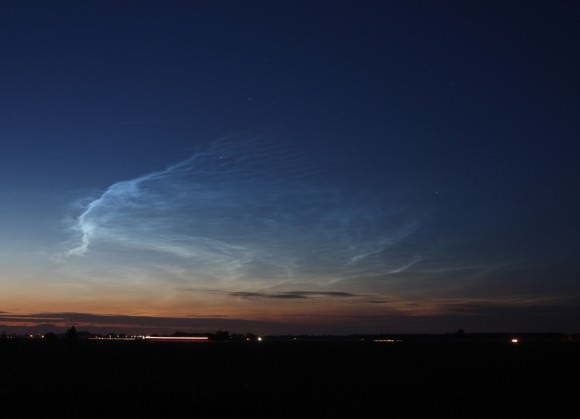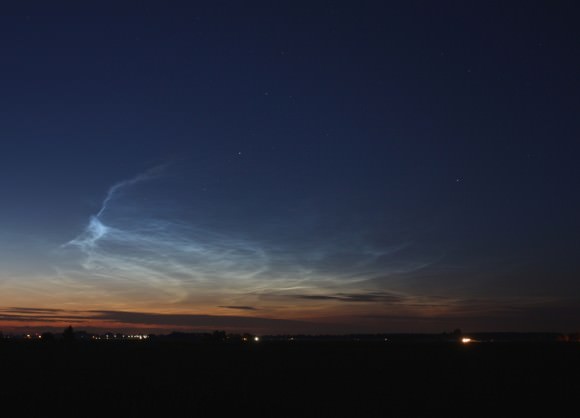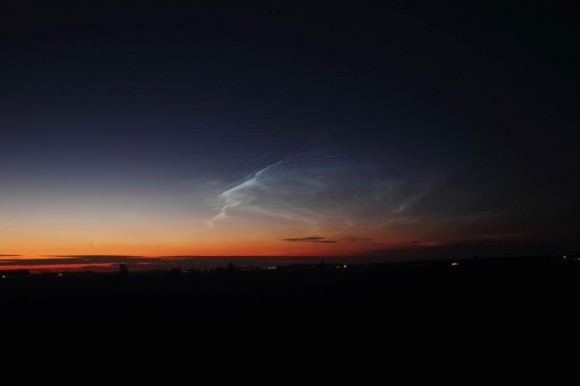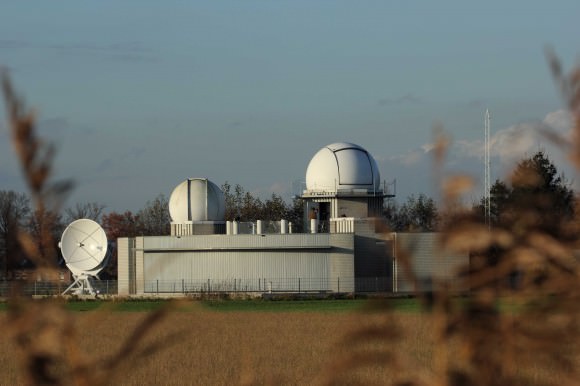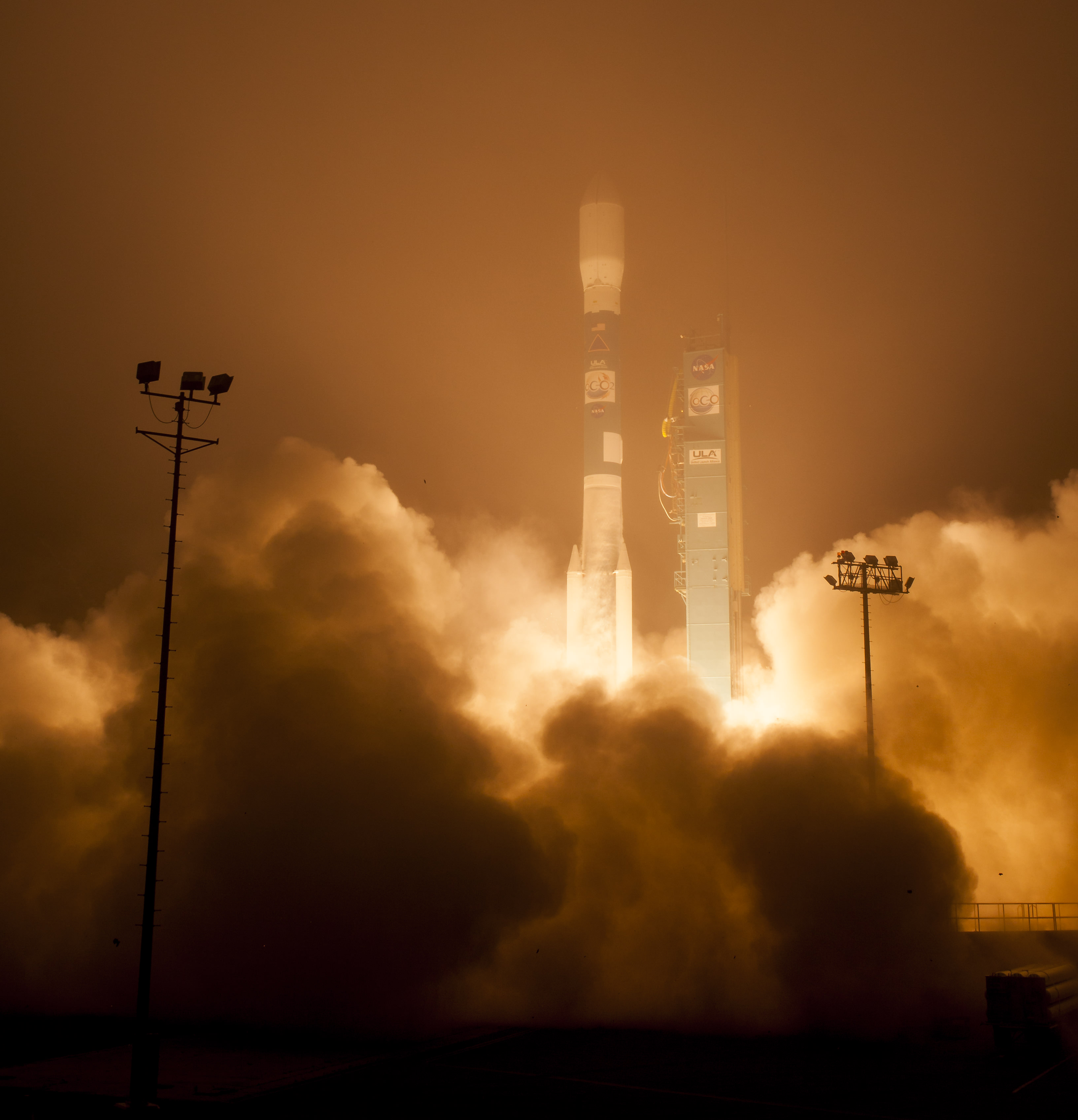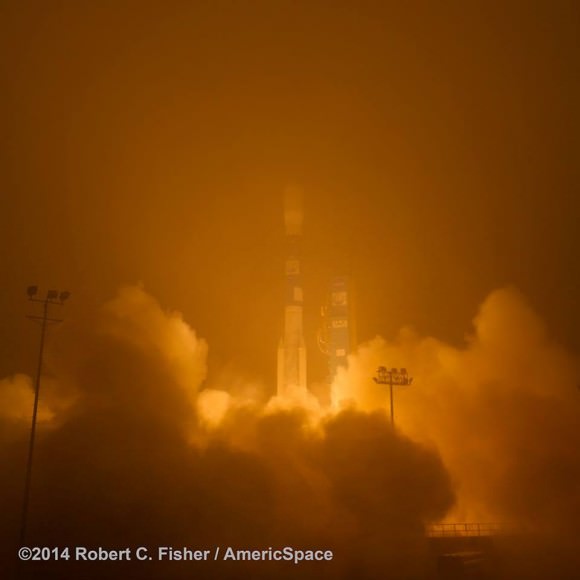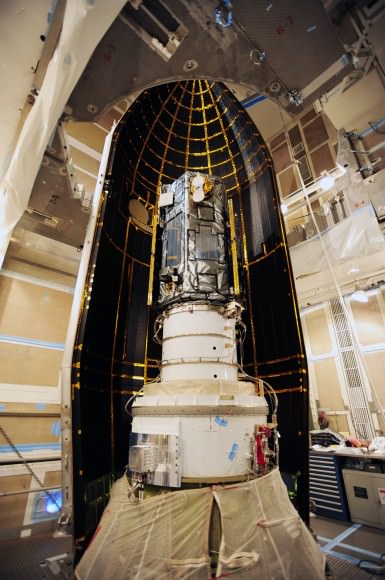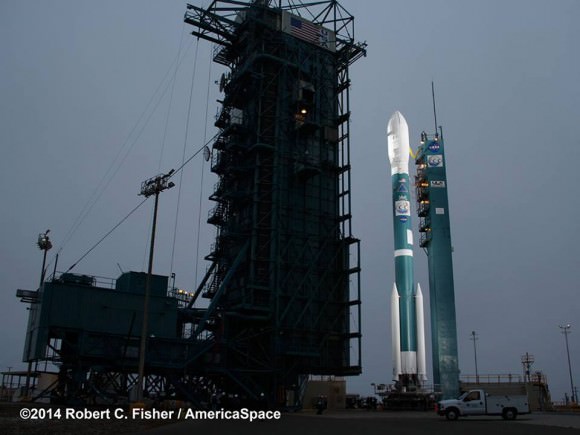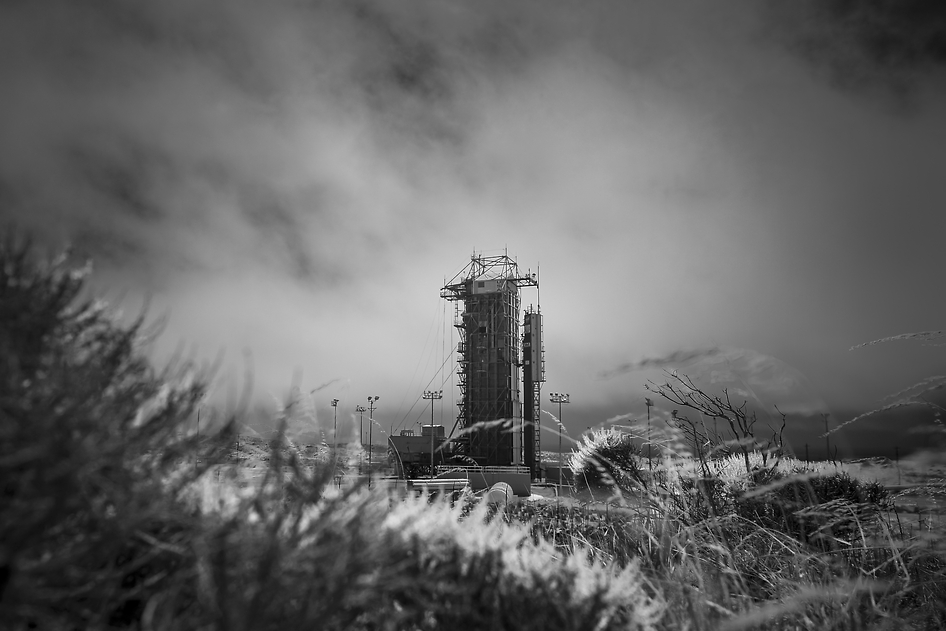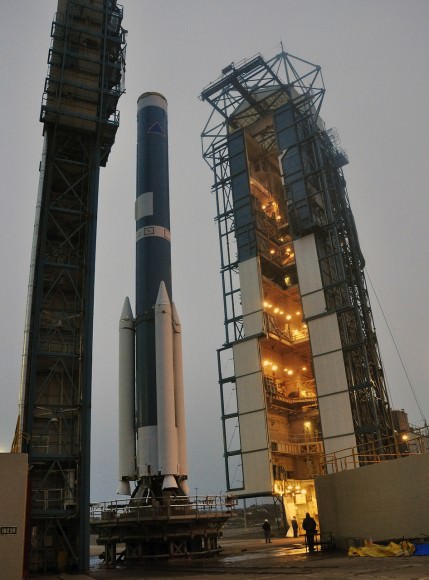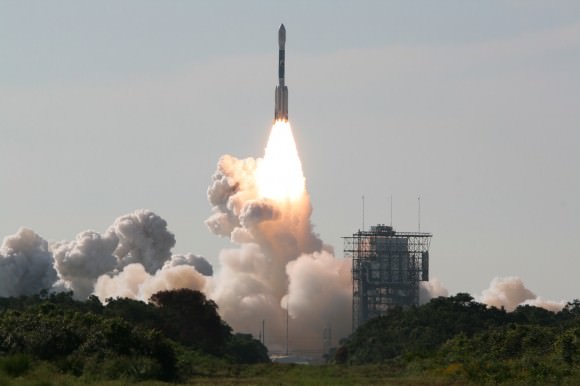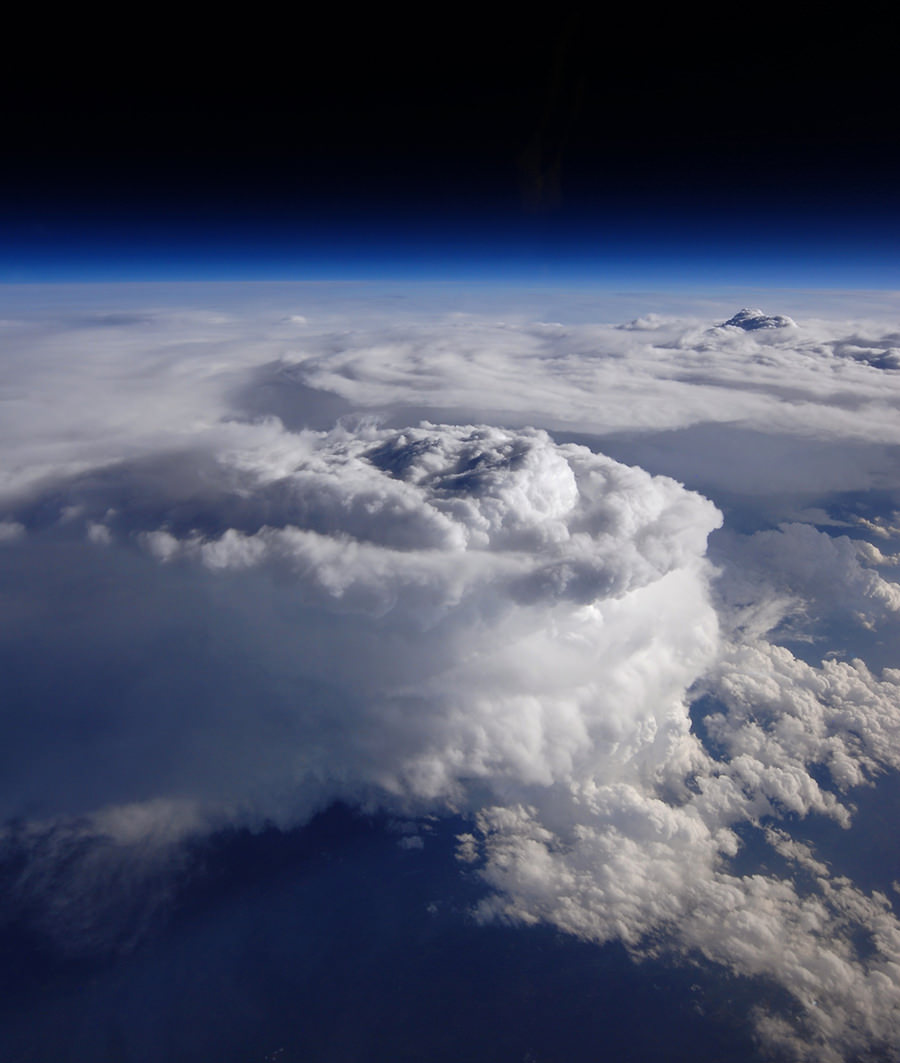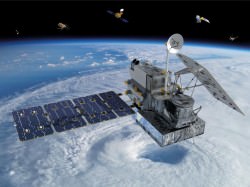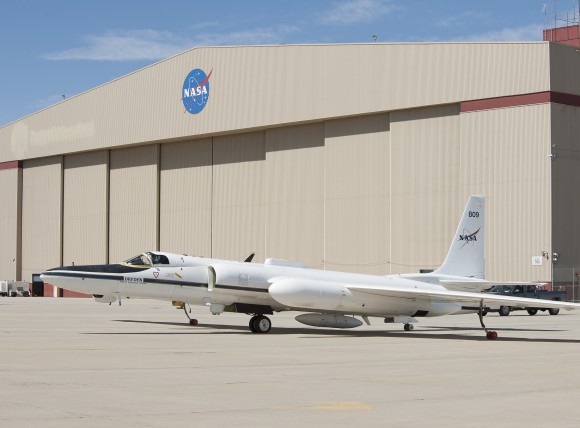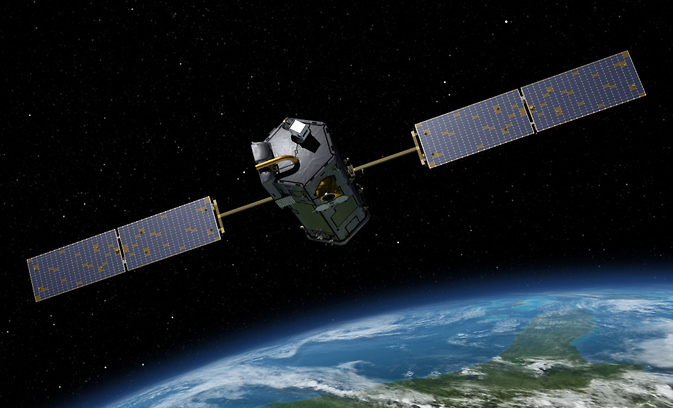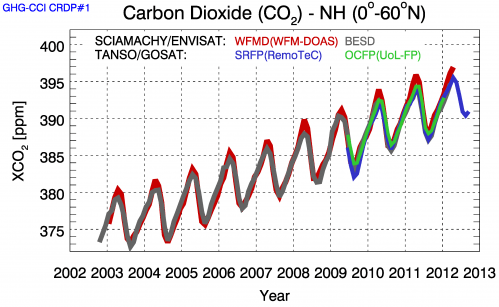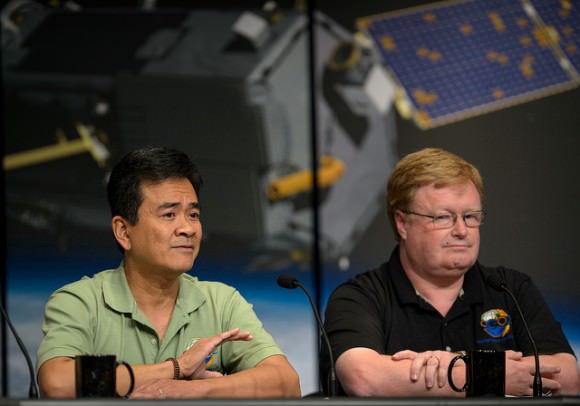138 million miles and 10 months journey from planet Earth, MAVEN moved into its new home around the planet Mars this evening. Flight controllers at Lockheed Martin Space Systems in Littleton, Colorado anxiously monitored the spacecraft’s progress as onboard computers successfully eased the Mars Atmosphere and Volatile EvolutioN (MAVEN) spacecraft into Mars orbit at 10:24 p.m. Eastern Daylight Time.
Shortly before orbital insertion, six small thrusters were fired to steady the spacecraft so it would enter orbit in the correct orientation. This was followed by a 33-minute burn to slow it down enough for Mars’ gravity to capture the craft into an elliptical orbit with a period of 35 hours. Because it takes radio signals traveling at the speed of light 12 minutes to cross the gap between Mars and Earth, the entire orbital sequence was executed by onboard computers. There’s no chance to change course or make corrections, so the software has to work flawlessly. It did. The burn, as they said was “nominal”, science-speak for came off without a hitch.
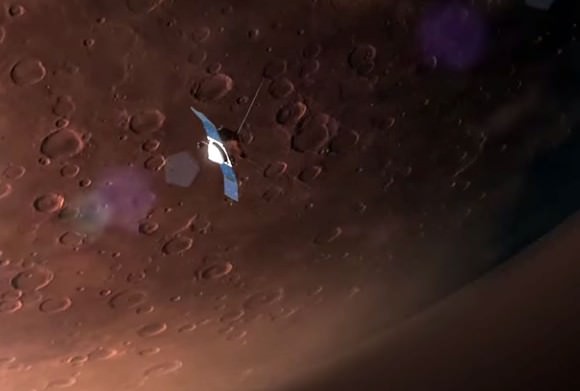
“This was a very big day for MAVEN,” said David Mitchell, MAVEN project manager from NASA’s Goddard Space Flight Center, Greenbelt, Maryland. “We’re very excited to join the constellation of spacecraft in orbit at Mars and on the surface of the Red Planet. Congratulations to the team for a job well done today.”
Over the next six weeks, controllers will test MAVEN’s instruments and shape its orbit into a long ellipse with a period of 4.5 hours and a low point of just 93 miles (150 km), close enough to get a taste of the planet’s upper atmosphere. MAVEN’s one-Earth-year long primary mission will study the composition and structure of Mars’ atmosphere and how it’s affected by the sun and solar wind. At least 2,000 Astronomers want to determine how the planet evolved from a more temperate climate to the current dry, frigid desert.
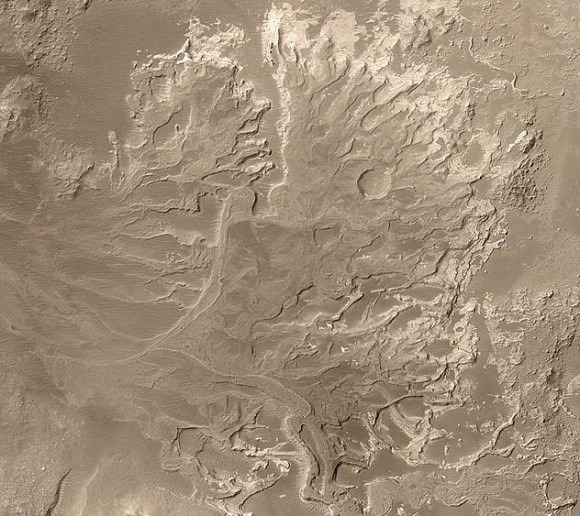
Vast quantities of water once flowed over the dusty red rocks of Mars as evidenced by ancient riverbeds, outflow channels carved by powerful floods, and rocks rounded by the action of water. For liquid water to flow on its surface without vaporizing straight into space, the planet must have had a much denser atmosphere at one time.

Mars’ atmospheric pressure is now less than 1% that of Earth’s. As for the water, what’s left today appears locked up as ice in the polar caps and subsurface ice. So where did it go all the air go? Not into making rocks apparently. On Earth, much of the carbon dioxide from volcanic outgassing in the planet’s youth dissolved in water and combined with rocks to form carbon-bearing rocks called carbonates. So far, carbonates appear to be rare on Mars. Little has been seen from orbit and in situ with the rovers.
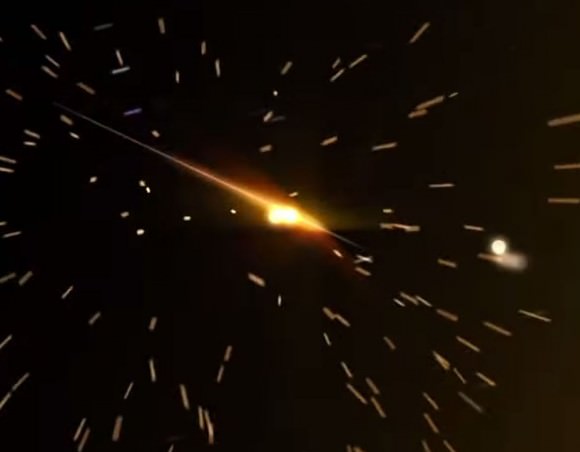
During the year-long mission, MAVEN will dip in and out of the atmosphere some 2,000 times or more to measure what and how much Mars is losing to space. Without the protection of a global magnetic field like the Earth’s, it’s thought that the solar wind eats away at the Martian atmosphere by ionizing (knocking off electrons) its atoms and molecules. Once ionized, the atoms swirl up the magnetic field embedded in the wind and are carried away from the planet.
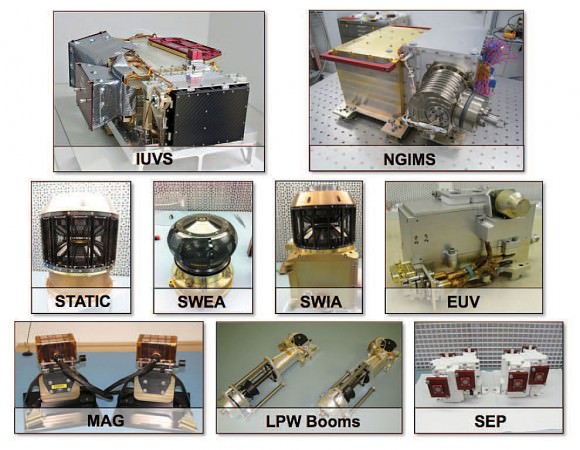
Scientists will coordinate with the Curiosity rover, which can determine the atmospheric makeup at ground level. Although MAVEN won’t be taking pictures, its three packages of instruments will be working daily to fill gaps in the story of how Mars became the Red Planet and we the Blue.
For more on the ongoing progress of MAVEN later tonight and tomorrow, stop by NASA TV online. You can also stay in touch by following the hashtags #MAVEN and #JourneytoMars on social media channels including Twitter, Instagram and Facebook. Twitter updates will be posted throughout on the agency’s official accounts @NASA, @MAVEN2Mars and @NASASocial.

